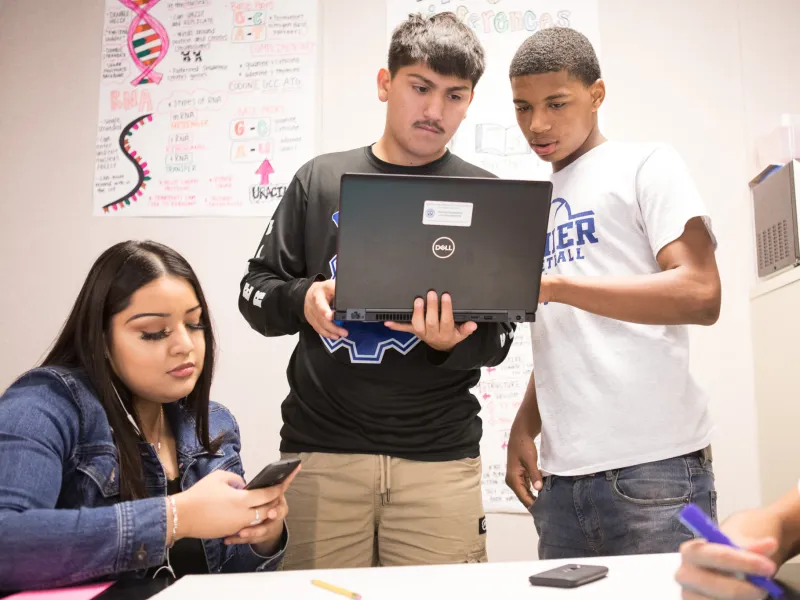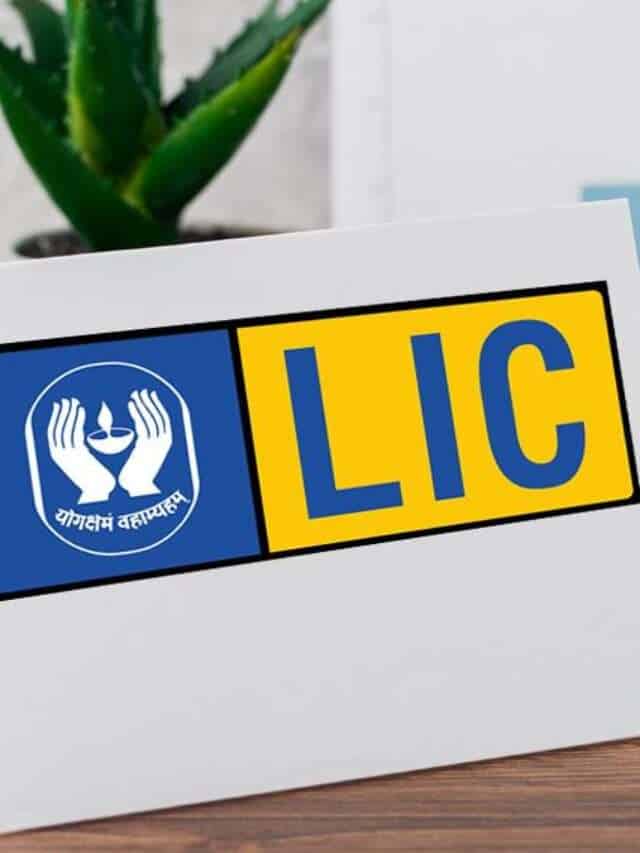When the pandemic hit, Daniela Crispin was 14 years old and entering her first year of high school at the STEM Academy at LEE High School. She had always had a knack for technology and remembers being excited to start at the North East Independent School District magnet school that year.

But Crispin was forced to start her new journey from behind a computer screen in her small bedroom rather than in a classroom full of her peers. A lack of reliable internet didn’t help matters.
“It was scary because immediately everything was shut down, and I didn’t have a laptop,” she recalls. “We didn’t have good internet, so we immediately had to switch to a better internet provider. The school was able to provide us with laptops, but they didn’t really work — we had to work our way around with these laptops.”
Crispin’s father supports their family of four on a construction worker’s wages, she said. Their monthly internet bill went from $50 to $80 a month, she said. When her borrowed laptop wasn’t working well, she would try to do her homework on her smartphone — but it was difficult, she said.
“A lot of it was writing essays, and it was like texting but it was a lot of having to swipe out and go to Safari or Google to look up articles and read textbooks — I was just going back and forward and especially on such a small screen, it was hard,” Crispin said. “I started failing, because I need to be in a classroom focused on the teacher and being on the screen didn’t help me.”

With the help of her school, family and local nonprofit Family Service, Crispin got her own laptop, which allowed her to finish high school with an associate degree.
Now she’s enrolled at Texas A&M University-San Antonio, studying criminal justice, and on her way to becoming the first person in her family to graduate from college with a four-year degree.
But her story illustrates the obstacles facing San Antonians on the wrong side of the digital divide — the term coined for the disparity between those with access to the internet and those without it.
Affordability and digital literacy are still proving to be significant barriers to internet access for low-income families, residents of multifamily housing and elderly people in San Antonio. However, efforts across the region are picking up steam, fueled by incoming federal dollars and nonprofit initiatives. Both the county and city, as well as local nonprofits, have also launched programs within the last few years to try to better tackle the divide. Just in the past year, the city has dedicated $8.9 million to the issue, the county an additional $5.4 million, and nonprofits such as Methodist Healthcare Ministries have earmarked another $21 million to closing the divide
The city’s latest digital inclusion survey, published in October, showed broadband access across San Antonio has risen from 80% in 2019 to 82% in 2023.
However, barriers such as lack of infrastructure, affordability and understanding how to safely use the internet remain, said Rhia Pape, executive director of SA Digital Connects, a public-private organization working to expand digital access. Local digital advocates are hopeful that state and federal funds will help speed up the digital adoption process, especially among multifamily housing residents and residents living in the more rural and lower-income areas of the region.
“There’s going to be a significant amount of progress over the next two years in the access and infrastructure [areas],” she said.
Reaching unincorporated areas
County efforts for more digital inclusion have been underway since late last year, but have picked up momentum within the last several months.
Bexar County allotted roughly $25 million in federal pandemic relief money to digital inclusion efforts in August 2022.
After approving a landmark agreement with Spectrum this past fall to help rural Bexar County residents gain better access to high-speed internet, the commissioners approved expanding that effort and will officially vote on approving an updated contract in late January.
Under the agreement with Spectrum, the county will give roughly $5.4 million of its ARPA funds to Spectrum for the internet provider to build out high-speed broadband infrastructure to reach approximately 8,700 households, making it accessible to all of the county’s unincorporated areas. As a part of that partnership, telecommunications company Spectrum has agreed to spend $26.3 million to lay the roughly 600 miles of broadband cables across the county’s east, south, and west sides by the end of 2025. Customers who want to connect to that internet will be able to at rates starting as low as $30 a month.
Under the amended contract, an additional 1,800 homes will be able to have affordable access to service through another $6.35 million pledged from the county and $4.9 million from Spectrum.
San Antonio’s deal with AT&T
Meanwhile, a deal was struck earlier this year between the City of San Antonio and AT&T to build more broadband infrastructure within the city’s least-connected areas.
In April, the City Council approved a broadband connectivity contract with AT&T that will see AT&T build out fiber to connect 20,200 residents and businesses across seven council districts to affordable internet access over the next three years. The city agreed to put $8.9 million toward the effort, with AT&T committing $13 million, putting the project’s total investment at around $22 million. Customers will be able to connect to that internet for as low as $30 per month as well, with qualifying customers being able to get free access.
“It’s very exciting for us to get closer to that 100% of closing the gap when it comes to infrastructure,” Dillard said. “And remember, this is fiber to the premise. That’s something that wasn’t in the conversation two or three years ago, and that now it’s leading the way.”
Within the last two months, however, AT&T has come back to the city wanting to expand the project, said Brian Dillard, the city’s chief innovation officer. The service provider will now connect 28,000 locations across all 10 council districts and is investing an additional $11 million, he said.
The Office of Innovation has been trying to help map out and close San Antonio’s digital divide since before the pandemic. It was the office’s early efforts to launch the city’s first digital inclusion survey in 2019 that helped city officials know where to dispatch digital inclusion efforts during the 2020 lockdown, Dillard noted.
Since 2017, the city has made free Wi-Fi accessible within all city-owned buildings, libraries, community hubs and 20 city parks. VIA Metropolitan Transit also offers free Wi-Fi on every bus and van and at every transit facility.
“The fact that we had the [first] survey in 2019 and completed it just ahead of the pandemic allowed some of our efforts to be really data-influenced,” said the city’s Digital Inclusion Coordinator Leigh Middleton. “It allowed us to know where the neighborhoods most impacted by this were … so a lot of our efforts have been really targeted and been really effective.”
In late 2020, the city launched its “Connected Beyond the Classroom” initiative, which aimed to allow students within Harlandale, Edgewood and San Antonio ISDs to connect to their school’s free Wi-Fi from home. That program is still going strong, Dillard said.
In recognition of its efforts to increase digital access, the city was named the 2023 Visionary Digital Inclusion Trailblazer by the National Digital Inclusion Alliance earlier this month.
Community-level work
Over the last few years, the county and city have both worked closely with SA Digital Connects to bridge the gap between those with internet access and those without.
Together, they formulated a Digital Equity Plan in 2021 to serve as a roadmap for attacking the digital divide at every level: infrastructure, affordability and digital literacy. The plan outlines a need for nonprofit organizations to help disseminate devices to residents in need and teach users how to operate them.
One nonprofit that has answered the call is Methodist Healthcare Ministries.
The main reason Methodist Healthcare Ministries has opted to focus their dollars toward digital equity is because of how important internet access has become for health care, said Jaime Wesolowski, the organization’s president and CEO. Residents need the internet to access telemedicine services, schedule or view appointments, and to access their health records, he explained.
Earlier this month, it announced it would donate more than $21 million over three years to 20 organizations to advance digital equity in the San Antonio region. With federal initiatives to increase broadband access such as the Federal Communications Commission’s Affordable Broadband Outreach Grants and the Federal Broadband Equity, Access and Deployment Program, Methodist Healthcare Ministries saw an opportunity, said Charito Lincoln, vice president of community investments.
“That’s really why we’re looking at device access and digital literacy — at making sure that residents have those, whether that’s a tablet, a smartphone, or a computer and that they know how to use them safely,” Lincoln said. “I think one of the things we found out early on was [people] can build all the infrastructure we want, but we need to make sure people have those skills and devices to actively participate in it.”
Family Service — the nonprofit that helped Crispin get her own laptop — will get $1 million from Methodist Healthcare Ministries to help bolster its existing digital equity programs. Other organizations such as Girls Inc. of San Antonio, Goodwill Central Texas, Community Tech Network and Restore Education also will receive funding to do community-level work bringing technology to those without.
”We know that by investing in advancing digital equity, we are not just helping communities to bridge the digital divide, but are empowering them to access opportunities, connect with vital resources, and take charge of their well-being,” he said.
“It’s seeing kids like Daniela who come back to try to help their own community that really make this special,” said Sara Santiago, the manager of youth education and career services for Family Service. “We have to use computers for everything today; job applications, school work, telemedicine — all of that is done online.”
Read more –Students scramble as Codeup closure leaves them in debt, unsure how to complete their studies




















